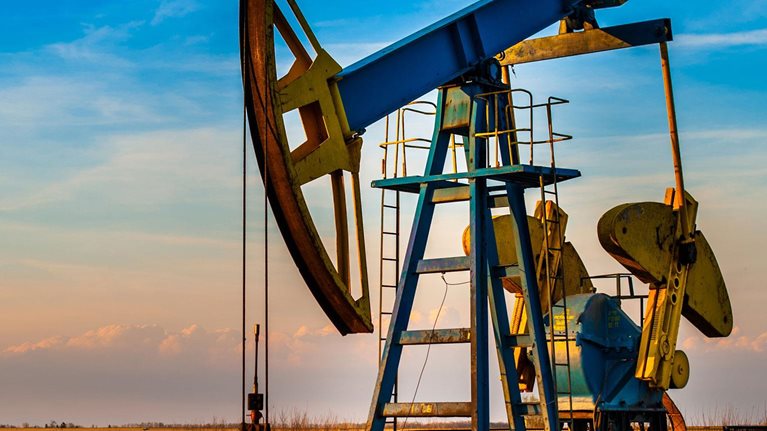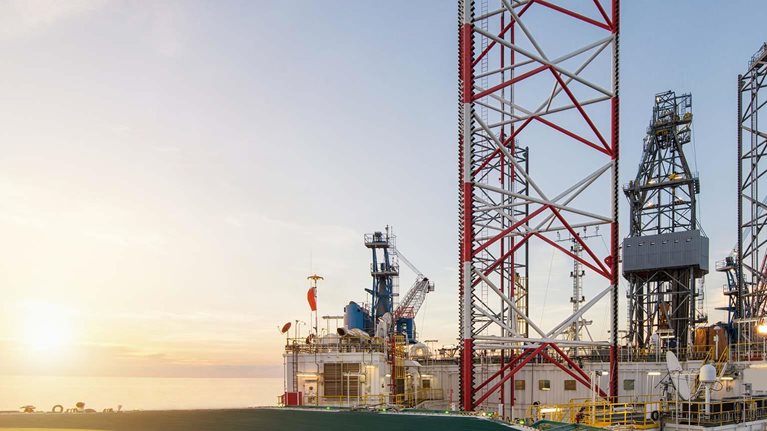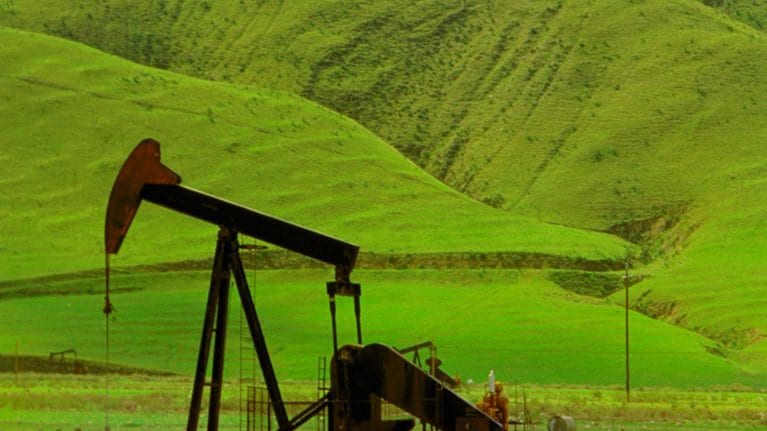Although oil prices have eased back over recent days, levels remain near three-year highs, and still above where most analysts had previously expected them to be in early 2018. This should be enough to support activity in the oilfield services and equipment (OFSE) sector going forward. However, the impact may not be universal, with the latest indications suggesting the higher prices have prompted a surge in US onshore output, which could mean less activity elsewhere, especially offshore.
Stay current on your favorite topics
In addition, several majors have said they expect prices to fall over the next few months, which is keeping them cautious, especially on projects with longer lead times away from US shale. A steep backwardation in the market would support this view, with prices in 2022 currently about $10/barrel below front month. We forecast Brent at around $55/barrel by the end of the year in McKinsey Energy Insights’ base-case scenario.
Nevertheless, capex is expected to rise, with Schlumberger predicting a 5 percent growth in international spend and a 15–20 percent rise in North American onshore. However, those offshore plans that are moving forward are doing so at much lower cost levels—something that is reflected in tighter Q4 OFSE margins, despite a sustained rise in revenue through 2017. Baker Hughes offshore rig counts began to edge up from November, after falling to a record low in Q3, while we recorded a fall of 3 percent on jack-ups and 13 percent on floaters in the second half of 2017—although prospects for the year ahead look rosier.
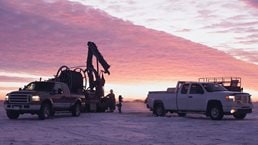
Read our latest thinking on OFSE
Returning to the US onshore, rapid innovation appears to be driving down costs faster than many expected—as was the case in late 2016/early 2017—boosting recoverable resources and lowering the oil price needed to trigger increases in US crude output. Speaking at his Q4 earnings call, Halliburton’s CEO Jeff Miller said: “Rigs continue to get more efficient, but more importantly, completions intensity continues to grow with longer laterals and tighter spacing.” This improved efficiency, however, has inevitably constrained revenue and margin growth for OFSE providers in the booming sector. The delayed impact of rig increases from the first half of 2017 meant production continued to rise sharply in Q4, despite a slight fall in onshore rig numbers in the quarter. Furthermore, the rig count continued to rise in January and into February in response to higher prices.
These rapid efficiency improvements left the US Energy Information Agency (EIA) and others underestimating US output growth as crude prices rose late last year. In early February this year, growth figures between August and November 2017 were increased to almost 850,000 b/d, and the EIA currently estimates February output at 10.26 million b/d—now well above the previous US annual output record of 9.7 million b/d in 1970.
Looking ahead, the EIA expects that US crude output will rise to over 11 million b/d by the end of 2018, absorbing much of the anticipated global demand growth this year, and making it the world’s biggest producer ahead of Russia at 10.95 million b/d.
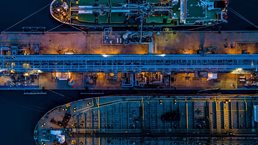
Powered by Energy Insights
Energy Insights’ world-class team of data scientists and analysts leverage data and advanced analytics to power our insights and advise clients across the energy value chain.
Set against the rising US output, OPEC compliance reached a new high in December as Venezuelan production failed to keep pace with quotas. The tighter supply led to stock draws for the third quarter running in Q4, which helped push up prices. Rising tensions in the Middle East also turned sentiment more bullish, and there is little doubt over Saudi Arabia and Russia’s commitment to supply restraint, although no decision has been made beyond 2018.
Other supportive factors further include the impact of cumulative cuts in capex on future non-OPEC conventional production—this could impact gas too, with Shell recently warning of an LNG shortage from the mid-2020s.
Oil market development: Volatility returns
A steady rise in oil prices through Q4 to three-year highs early in the new year was followed by a partial reversal in early February, after a surge in US onshore output.
- The fourth quarter saw prices continue Q3’s upward trend, before reaching a three-year high of over $70/barrel for front month Brent in late January. Since then volatility has hit the markets, with a sharp drop followed by a partial recovery to the mid $60s/barrel. The rally had been driven by political events in the Mideast Gulf region, high OPEC/non-OPEC quota compliance, falling stock levels, and significant demand growth linked to buoyant economies. It has moderated on rapidly rising US output, stock-market jitters, and signs of a reversal in the stock depletion.
- Stock draws in the US and a more balanced international market saw Brent’s premium to WTI contract to just $3/barrel, while backwardation steepened, with prompt WTI contracts now over $11/barrel above 2022 prices. The promise of additional growth from US producers may be dampening longer-term sentiment, which is behind many forecasters’ expectation of lower prices by the end of 2018.
- Rising US output has reached record levels over recent months, and a revised EIA outlook in February raised forward US crude production estimates. For the year, it now expects crude production to average 10.6 million b/d in 2018, and to exit the year at 11.1 million b/d. In 2019 the average is estimated at 11.2 million b/d. The current all-time US output annual peak was in 1970 at 9.7 million b/d.
- In January the International Energy Agency (IEA) warned that the market conditions seemed reminiscent of the first wave of US shale growth that was followed by the price crash, and that history could be repeating itself as US production growth in 2018 could single-handedly meet the higher global demand growth and potentially push up global oil inventories.
- In early November, OPEC and its partners, which include Russia, Oman, and Kazakhstan, agreed to maintain the 2017 output cutoff of 1.8 million b/d until the end of 2018. More recently, Saudi Arabia and Russia signalled their readiness to cooperate beyond that. Libya and Nigeria, which had been outside the agreement, had quotas imposed by OPEC in November.
- There is some threat to supply in Venezuela, where output dropped to 1.6 million b/d at the end of 2017, from 2.0 million b/d in January 2017. This fall cut OPEC crude output to 32.2 million b/d in December, boosting compliance with quota levels to above 100 percent. However, any shortfall may soon be made up by other OPEC members—output has already risen in January on higher Nigerian and Saudi production—so the EIA assumes that OPEC production will average near its quota level of 32.4 million b/d for the year.
- The IEA expects rapid US growth, and gains in Canada and Brazil will drive up non-OPEC supply by 1.7 million b/d in 2018. Speaking at his Q4 earnings call, Schlumberger CEO Paal Kibsgaard said the US onshore growth was needed to make up for underinvestment elsewhere: “We expect another year of robust growth in North America shale oil production, which will be required to maintain the balance in the global oil market. The reason for this is the aging production base in Latin America, Africa, and Asia continues to show underlying production decline after three years of unprecedented underinvestment.”
- Global crude stocks fell for the third quarter running, dropping from 170 million barrels above the five-year (OECD) average (which now includes three glut years) in Q3, to about 109 million barrels, according to OPEC. Looking ahead, the EIA forecasts a build in global stocks of 45 million barrels for 2018. The IEA also expects a slight build if OPEC output remains steady, although it says much of the year should be balanced, with oil demand and non-OPEC production growing by similar amounts.
- Demand remains firm, especially in China, which became the world’s largest crude importer in 2017. The IEA raised its forecast for oil demand growth in 2018 from 1.3 million to 1.4 million b/d in January, with the rise underpinned by a strong global economic performance.
OFSE market activity
E&P capex. Capex continued to rise in Q4 for the fourth quarter running (Exhibit 1).

- Operator capex rose again in Q4, and has now shown steady growth throughout the year, which could lay the foundations for further increases if prices maintain current levels or rise further. However, the typical Q4 seasonal spike was less pronounced this year: “As we expected, year-end presented some spotty activity caused by holiday schedules, weather, and exhausted customer budgets,” said Miller, speaking about the US onshore. The quarter saw capex of $45 billion, compared with $38 billion in Q2 2017 and $35 billion in Q3 2016. This represented a rise of 13.7 percent on the quarter and 1.6 percent on the year. Operators are being encouraged by better value for money—as suggested by continued weak margins in the OFSE sector, which show costs remain low and under pressure—enabling many projects to go ahead with sharply reduced budgets.
- Strong investment growth in the US onshore in the first half of 2017 has begun to pick up again after easing a little in late Q3, while the depressed conventional and offshore sectors are also beginning to see signs of recovery. Speaking at the Q4 earnings call, Kibsgaard said: “In the international market, we expect growth in all regions in 2018 for the first time since 2014. Spearheaded by solid underlying activity increases and market share gains in the Middle East, Russia, Asia, and the North Sea while we expect more nominal growth rates in Latin America and Africa … we generate four to five times higher earnings for each incremental customer that was spent in the international market compared to the incremental customer dollars spent in North America. So, after three very tough years, it is now clear that the tide is clearly turning ...”
- Schlumberger said it would take time for activity to get going after the December approvals: “Q1 is a transitory quarter … activity will be seasonally lower in Russia and the North Sea, further impacted by the exceptional costs of reactivating and repositioning equipment for new contracts … worldwide,” it said in a recent presentation.
- New conventional projects must, however, be able to compete with shale developments in the US, which offer quicker returns. ExxonMobil has just announced plans to spend $50 billion to expand its US business over the next five years, while Chevron’s spending on shale projects, primarily in the Permian, is expected to increase by about 70 percent from $2.5 billion in 2017 to $4.3 billion in 2018—this contrasts with its overall global budget, which is down slightly at $18.3 billion, compared with $19.1 billion in 2017.
- Credit Suisse expects a 12 percent rise in US onshore exploration and production spending this year, led by major independents, such as EOG, Pioneer, and Continental. McKinsey Energy Insights is expecting a 13 percent increase in US onshore well capex in 2018.
Rig count. North American onshore market fails to pick up until January; offshore sector remains close to record lows (Exhibit 2).

- The North American onshore rig count fell slightly to 1,114 in the fourth quarter, according to Baker Hughes, but it then rose sharply in January to 1,195—which is 235 rigs more than January 2017. The week of February 9 then saw the biggest weekly rise since January 2017. Of the 1,195 total rigs at the end of January, 918 were in the US. McKinsey Energy Insights expects the US onshore rig count to grow to about 1,100 by the end of 2018. Much of the recent rise was in Canada, but activity there is easing back, with the US now taking the lead.
- The Permian basin in west Texas and eastern New Mexico remains the most active region, with 437 rigs in operation on February 9, the most since January 2015. Those rigs were expected to help boost oil output in the Permian to a record high near 2.9 million b/d in February, according to EIA projections, representing about 30 percent of total US oil production.
- Outside North America the onshore count was mixed on the quarter, with Asia–Pacific and Latin America showing gains. Globally, there was little change in Q4, but January has seen a sharp jump to 1,960—compared with a low of 1,334 at the end of Q3 2016.
- The offshore Baker Hughes rig count managed a tentative rise to 215 in January from a record low of 209 in September—barely reflecting the beginning of what many expect to be a more broad-based recovery in oil and gas project development in 2018 and 2019. Our data show that after showing signs of recovery in Q1–Q2 2017, rig demand actually decreased in the second half of the year (–3 percent for jack-ups, –13 percent for floaters since July 2017). Demand has now stabilized, although it remains more than 30 percent below levels seen in mid-2014. In the next bid round, we anticipate some improvement in rates as a result.
OFSE market performance
Revenue growth continues, but margins remain under pressure.

- Revenue. Overall OFSE revenue was up, gaining 2.1 percentage points (pp) compared with the previous quarter, building on a gain of 9 pp last quarter. It is the fourth quarter of growth in a row, and revenue now stands about 20 pp above levels at the beginning of 2017—confirming that seasonally adjusted revenue is also now on the rise and indicating a sustained recovery after two to three years of decline (Exhibit 3). Annual gains extended across all sectors, although EPC was down 5.5 pp on Q3 2017.
- Margins and returns. Margins and shareholder returns were less impressive. Margins for all sectors apart from the big, integrated service companies (Schlumberger, Halliburton, and Baker Hughes) were down on the quarter, and only equipment showed any significant rise compared with Q4 2016 (Exhibit 4). This is largely down to operators lowering the bar on project costs, as a condition of raising capital expenditures. And it wasn’t just offshore; even in the US onshore, margins remained under pressure: “In the fourth quarter, our Completion and Production division margins were impacted by two expected transitory headwinds in North America, seasonality and cost inflation,” said Miller, although he emphasised that this was temporary and that margins were expected to “normalize” in 2018, based on higher prices and utilization rates, and better technology. Spare capacity is already at zero in some sectors and prices could rise 5–10 percent this year. OFSE share values also came under renewed pressure after improving in Q4 and into the new year. Much of the pullback occurred in late January (especially those focused on the offshore), helped by surging US output, softening oil and equity markets, and the rising cost of capital. At the time of writing, equipment shares were up 2 percent since January 2015, while assets had fallen back to a 51 percent discount.

-
Integrated services. Service revenues were up 6.0 pp on the quarter after a 17.3 pp rise in Q3 and were up 18.1 pp on the year—driven by tough cost cutting and improved offerings. This was reflected in continued pressure on margins, which were little changed on the quarter and down slightly on Q4 2016. With prices holding in the mid $60s/barrel, many had anticipated more of an uptick, but a number of operators remain cautious, anticipating a fall in prices over the year: “The gradual decline in inventories, together with heightened political uncertainty, has driven prices up. But our expectation is that some of this recent strength could be short lived, and prices will moderate over the medium term,” said BP CEO Bob Dudley in mid-February. Nevertheless, there were further comments in OFSE company Q4 earnings calls referring to increased tender awards in the offshore and international markets, as well as on strong growth in US onshore.
Schlumberger continued to consolidate its market position, announcing its purchase of Weatherford’s US hydraulic fracturing business for $430 million at the end of December, which the company says will “further enable margin expansion of the Schlumberger OneStim business in North America.” In addition, Schlumberger and Subsea 7 are in talks to form a 50-50 joint venture to deliver subsea installations and services for oilfields. The two companies have collaborated since 2015. Arctic Securities said the joint venture “improves their competitive position and creates a unique platform to capture market share in a recovering subsea market.” Schlumberger also plans to divest its seismic acquisition business.
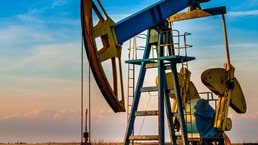
Recovery gains pace
- Services (midsize and smaller companies). Revenue for this category was little changed compared with Q3 2017 but was up almost 38 pp on the year. Margins, however, sank sharply in Q4 2017 compared with Q3, after a sharp rise in Q3 2017, but both moves were largely down to Weatherford’s performance. Margins were also down slightly on the year.
- Equipment. Strong US onshore activity left equipment revenue up 8.6 pp on Q3, after seeing little change in the previous quarter. The sector was also up strongly on the year, gaining 22.3 pp. Margins slipped back slightly on the quarter but were 8.8 pp up on Q4 2016—although this is still lower than anything before Q4 2015. Book-to-bill ratios are accelerating upward, gaining 0.31 on the quarter, leaving them up 0.04 since last year. After rising in Q4 and early January, returns to shareholders from equipment companies fell back at the end of January, and are now up just 2 percent compared with January 1, 2015—although this is still the best performing of any OFSE sector (Exhibit 5).

- Assets. Total revenue in the assets sector was up slightly on the quarter, after a 7 pp rise in Q3, and was up almost 10 pp on the year. Margins were down 3.9 pp on the year, and 6.4 pp on the quarter, with rig rates for new work still at low prices, while older, more profitable contracts continued to expire. However, major asset holders are indicating there are signs of an upturn: Jeremy Thigpen, CEO of Transocean, said that excluding Songa, which it bought in Q3, the company added $873 million in orders in 2017, almost a 70 percent increase over 2016, and “of this total, $652 million was secured in the fourth quarter, validating our view that the offshore market is indeed improving. … New 2018 offshore project commitments are forecast to rise approximately 140 percent as compared with 2017.” Nevertheless, stock-market returns continue to languish at the bottom of the pile. After a brief recovery late last year, it appears higher oil prices and signs of an upturn are not yet sufficient to improve valuations in this relatively indebted sector, particularly as offshore remains slow with operators showing hesitance to act in response to higher oil prices just yet.
- EPC. EPC providers saw quarterly revenue decline by 5.5 pp, after a 5 pp rise in Q3. Revenue was 6.1 pp up on Q4 2016—reflecting a much smaller seasonal year-end capex spend in Q4 2017, compared with Q4 2016. Margins are down slightly on the quarter and marginally up on the year. Order backlog ratios were up 0.81 at 6.3x in Q4, after rebounding from record lows last quarter, although they remain down 1.49 on Q4 2016 (Exhibit 6).

